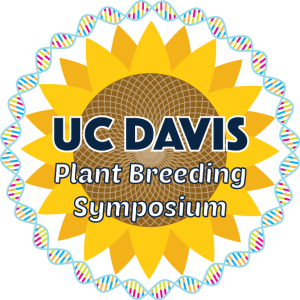- Yeast perfume. Great for Valentine’s Day.
- Webinar of discussion on “Origin Products and Native American Tribes: EU and U.S. Law and Policy.”
- The perennial attraction of perennial rice.
- Ancient Nubians knew domesticated wheat and barley earlier than thought. But not as early as Britons.
Nibbles: Citrus disease, Forests & women, Green Revolution trifecta, Lost apples, PNG & ITPGRFA, Leafy greens, Cassava development, Maize evolution vid
- Getting to grips with citrus greening.
- The fabulous church forests of Ethiopia. But are women involved?
- Three articles on why the African Green Revolution won’t be like the Asian one.
- Whatever happened to the Esopus Spitzenburg?
- Papua New Guinea ratifies the ITPGRFA.
- African indigenous vegetables for development. Hey, I’m doing my part.
- Cassava is naturally climate-smart, but yields still not rising fast enough.
- Great video on the origin of maize.
UC Davis Plant Breeding Symposium coming soon
 The 2015 UC Davis Plant Breeding Symposium will take place on April 10. The topic is “Challenges in Plant Breeding: Past, Present, and Future.” There’s an interesting lineup of invited speakers, and “[t]his year is the first time that students have the chance of presenting their research during the symposium.” We’ve been promised a summary post when it’s done. But that shouldn’t stop you going, if you can, or following the webinar.
The 2015 UC Davis Plant Breeding Symposium will take place on April 10. The topic is “Challenges in Plant Breeding: Past, Present, and Future.” There’s an interesting lineup of invited speakers, and “[t]his year is the first time that students have the chance of presenting their research during the symposium.” We’ve been promised a summary post when it’s done. But that shouldn’t stop you going, if you can, or following the webinar.
Brainfood: Identifying accessions, Evaluating yeasts, Using CWR, Wild grapes, Bushmeat and nutrition, Rice evaluation, Tomato characterization, Sugarcane CWR, Nordic livestock, Conservation optimization, Moringa development, Albanian olives
- High-throughput genotyping for species identification and diversity assessment in germplasm collections.. 9% of random Brassicaceae samples from Australian Grains Genebank misidentified to species, with some interspecific hybrids.
- Methodology for enabling high-throughput simultaneous saccharification and fermentation screening of yeast using solid biomass as a substrate. Everything is now, now, now these days.
- Utilization of wild relatives of wheat, barley, maize and oat in developing abiotic and biotic stress tolerant new varieties. Useful summary table at the end.
- Patterns of SNP distribution provide a molecular basis for high genetic diversity and genetic differentiation in Vitis species. Different grape species are really different.
- Disentangling the relative effects of bushmeat availability on human nutrition in central Africa. Both rational use of some wild mammals for nutrition, and conservation of more vulnerable species, are possible, though in different places.
- Blast Resistant Genes Distribution and Resistance Reaction to Blast in Korean Landraces of Rice (Oryza sativa L.). Conventional evaluation of landraces is useless; you really need to look at the genes.
- Characterization of a collection of local varieties of tomato (Solanum lycopersicum L.) using conventional descriptors and the high-throughput phenomics tool Tomato Analyzer. Brave new world.
- Phylogenetic analysis of Saccharum s.l. (Poaceae; Andropogoneae), with emphasis on the circumscription of the South American species. Allopolyploid, with 2 species belonging in a different genus.
- Utilization of farm animal genetic resources in a changing agro-ecological environment in the Nordic countries. Need to phenotype and genotype everything. Now where have I heard that before?
- Multi-objective optimization for plant germplasm collection conservation of genetic resources based on molecular variability. Lots of data plus fancy maths can tell you which individuals you should add to an ex situ collection to maximize conserved diversity.
- Actual and Potential Applications of Moringa stenopetala, Underutilized Indigenous Vegetable of Southern Ethiopia: A Review. Potential as a source of drugs, but you need to learn to grow it.
- Olive in the story and art in Albania. There are old olive trees around castles.
KC on TV
Dr KC Bansal, director of India’s national genebank at the National Bureau for Plant Genetic Resources was interviewed on the TV show Eureka recently. Well worth listening to his advocacy for agricultural R&D in general and genebanks in particular. He says he is particularly proud of NBPGR’s wheat characterization work. BTW, the lakh is a unit in the Indian Numbering System equal to one hundred thousand. NBPGR has approximately 4 lakh accessions.